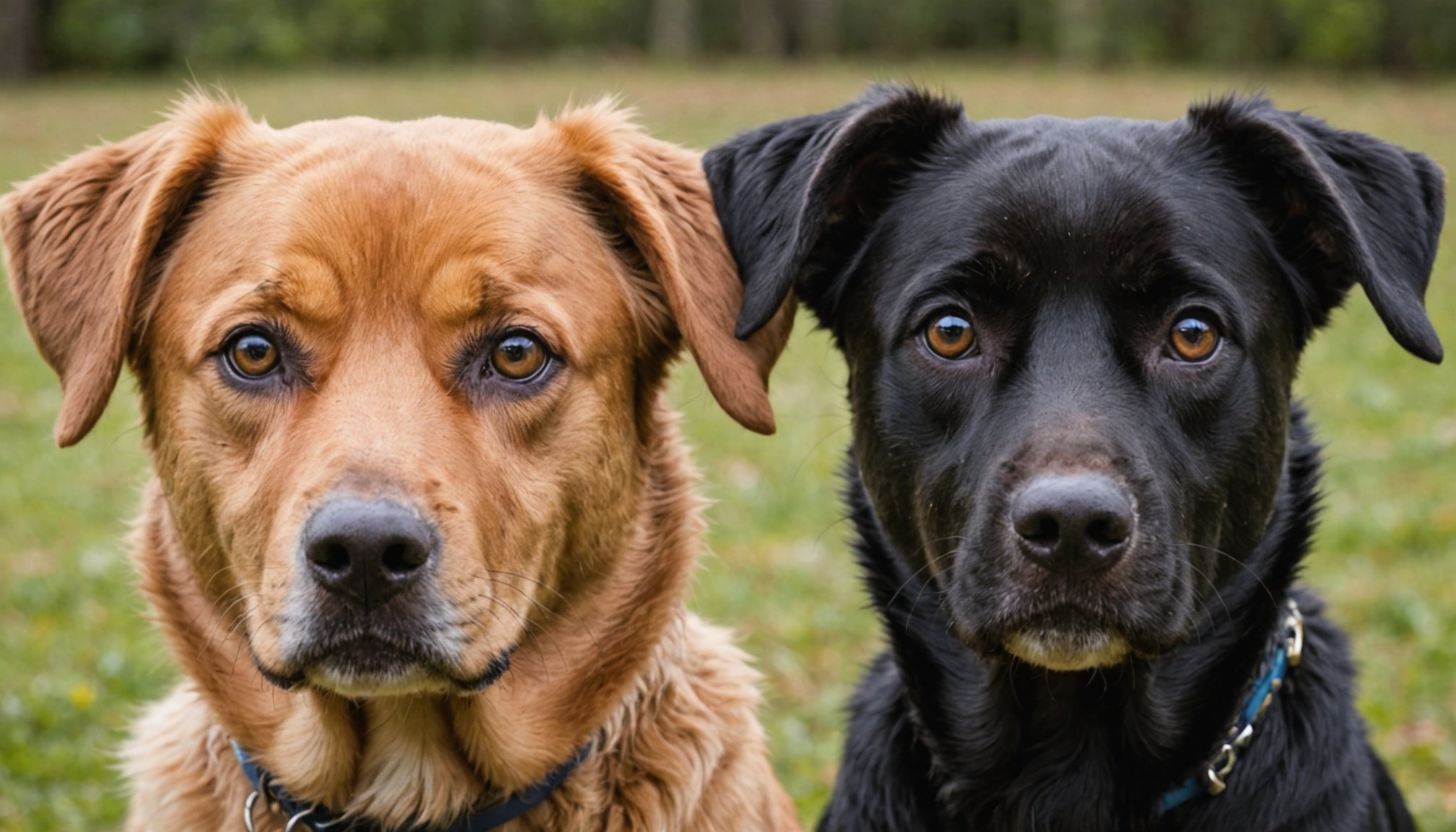Understanding the Impact of Abuse on Dogs
Emotional trauma in abused dogs can manifest in numerous ways, affecting both their mental and physical health. Often, abused dogs display behavioral signs of fear, such as trembling, cowering, or aggressive reactions when approached. This trauma can lead to long-term psychological effects, making it challenging for the dogs to trust and interact with others.
Recognizing these behavioral signs of fear is vital for addressing a dog’s trauma. Fearful dogs might avoid eye contact, tuck their tails, or show signs of anxiety like excessive licking or pacing. These responses are their way of communicating distress, and understanding them is the first step in helping them heal.
Also to read : Top strategies for ensuring your cat stays hydrated amidst kidney disease
Healing from neglect requires patience and empathy. A structured and nurturing environment is crucial to the recovery of an abused dog. Gradual exposure to positive experiences can help rebuild their trust. Offering consistent, gentle care and avoiding sudden changes in their routine can create a stable environment where they feel safe.
Being patient is essential during the healing process. Progress may be slow and requires consistent positive interactions. Over time, repeated positive experiences can diminish the effects of past trauma, allowing the dog to gradually feel more secure and open to forming bonds with humans. This journey towards healing from neglect is rewarding, offering both the dog and its owner a chance for profound connection.
This might interest you : Transform your home into a cat paradise: essential strategies for crafting a safe and harmonious environment for your feline friends
Building Trust with Abused Dogs
Establishing trust with abused dogs is pivotal for their rehabilitation. One effective method is through positive reinforcement. This involves rewarding desired behaviours with treats, affection, or praise, reinforcing the dog’s confidence and sense of safety. Such humane methods ensure the dog associates humans with positive experiences rather than fear.
Understanding canine body language is crucial for building trust. Dogs communicate a lot through their posture, ears, tail, and eyes. Recognising signs like a relaxed body and wagging tail can indicate comfort, whereas tucked tails or averting gaze may signal unease. Paying attention to these signals helps caregivers respond appropriately and nurture trust.
Creating a safe and comfortable environment is significant. Abused dogs require spaces where they feel secure, free from threats or harsh conditions. Ensuring that their space includes familiar items like their bed or toys can bolster their sense of security. Over time, as the dog connects safety with their environment, they become more willing to build relationships with their human companions. Patience and understanding play an irreplaceable role in this journey, as each positive interaction lays the foundation for trust, enabling dogs to open up and heal.
Socialization Techniques for Abused Dogs
Socializing an abused dog can be a delicate process, requiring precise strategies and an understanding of their unique needs. Socializing methods are essential, as they help ease the dog’s transition into new environments. These methods include structured introductions to new people and situations, facilitating the dog’s comfort and reducing stress.
Implementing controlled environments is pivotal. This means setting up scenarios where the dog feels safe while gradually meeting new individuals or animals. This could take place in familiar settings initially, such as the home, before moving to group settings.
In group settings, it is vital to monitor the dog’s body language, ensuring that interactions remain positive. Small, supervised socialization exercises can significantly reduce anxiety. Some effective practices include organized playdates with well-socialized dogs, allowing the abused dog to observe and eventually participate at their own pace.
The importance of gradual exposure cannot be overstated. Slowly introducing the dog to diverse situations improves their confidence. This can involve short, positive outings that avoid overwhelming the dog, thus reducing their fears gradually. Consequently, these techniques foster an environment where abused dogs can rebuild their social skills and enjoy interactions with other dogs and people.
Creating a Supportive Environment
Establishing safe spaces for dogs is critical for their healing journey. A well-designed environment plays a significant role in a dog’s recovery from abuse, as it influences their emotional well-being and aids the rehabilitation process. Environment design should prioritise safety and comfort, ensuring dogs have designated areas where they feel secure and protected.
Incorporating a consistent routine and structure enhances a dog’s sense of stability. This could involve regular feeding times, scheduled walks, and predictable daily activities. Such consistency reduces anxiety by creating an environment where dogs know what to expect, helping them regain confidence over time.
Integrating calming elements like music and scents can further contribute to the dog’s emotional well-being. Soothing sounds or lavender scents, for instance, can create a tranquil atmosphere that supports relaxation and alleviates anxiety. These elements assist in crafting an environment that nurtures and calms dogs, aiding their emotional recovery.
Considerations for designing a supportive environment include:
- Ensuring the space is free of hazards.
- Providing comfortable bedding and toys.
- Offering a quiet area for retreat and relaxation.
These adaptations foster a nurturing setting where dogs can feel at ease and are conducive to their healing journey, allowing them to rebuild trust and regain their emotional strength.
Case Studies: Success Stories of Rehabilitated Dogs
Exploring rehabilitation success stories can offer profound insights into the art of healing abused dogs. These inspiring transformations serve as a testament to the resilience of these animals and the dedication of those who help them. Before exploring these journeys, it’s crucial to understand that each case is unique, with different approaches required for successful recovery.
A notable example involves a dog named Max, who was initially terrified of human contact and new environments. Through patience, controlled environments, and structured socialization methods, Max gradually overcame his fears. Techniques such as positive reinforcement and consistent routines played pivotal roles in his transformation, encouraging trust and reducing anxiety over time.
Another case features Bella, who thrived through gentle exposure and support from a safe and nurturing environment. By focusing on routine and gradual introductions to new experiences, Bella learned to rebuild her confidence and engage positively with others. These cases highlight the effectiveness of specialised approaches tailored to meet each dog’s individual needs.
These success stories provide valuable lessons and insights for dog owners and trainers, emphasizing the importance of empathy, patience, and a well-structured strategy. Such examples remind us of the incredible potential for change and the rewarding journey of aiding these loyal companions towards a brighter future.
Expert Tips from Animal Behaviorists
Animal behaviorists offer invaluable animal behavior insights when it comes to rehabilitating abused dogs. These experts stress the importance of understanding individual dog personalities and histories, as these factors heavily influence their recovery techniques.
Professional training techniques often include the use of positive reinforcement as a primary tool. This means rewarding the dog for displaying calm behaviors, which in turn builds their confidence and solidifies positive associations with humans. The use of gentle commands and consistent praise can gradually transform a dog’s response to stressors.
Experts recommend tailoring rehabilitation programmes to the dog’s specific background and needs. For instance, some dogs may require desensitization to particular triggers, while others benefit from socialization exercises under controlled environments. Building routines and maintaining consistency is crucial, as it aids in developing a dog’s sense of security.
Furthermore, the significance of ongoing education for dog owners and trainers is emphasised by professionals in this field. Knowledge of the latest training methodologies and rehabilitation techniques can significantly enhance rehabilitation efforts, ensuring that dog owners are well-equipped to support their canine companions throughout the healing journey. Access to support networks and continuous learning opportunities can significantly bolster the rehabilitation process.
Resources for Dog Owners
Navigating the journey of rehabilitating abused dogs can be daunting, but numerous training resources exist to support dog owners. Understanding the available support can dramatically boost your confidence and effectiveness in aiding your canine companion.
Support networks provide a vital lifeline for dog owners, allowing you to connect with others facing similar challenges. These communities offer forums for shared experiences and advice, fostering a sense of camaraderie among dog lovers. Engaging with these networks not only offers emotional support but also access to a wealth of collective knowledge on dog rehabilitation.
Accessing educational materials is crucial for understanding effective rehabilitation techniques. Many animal welfare organizations offer online workshops, webinars, and downloadable guides. These materials break down complex topics—like spotting early signs of stress or mastering positive reinforcement techniques—into manageable insights.
For those seeking deeper understanding, consider investing in recommended reading materials, like books penned by renowned animal behaviorists. These books offer step-by-step strategies adapted from successful case studies and research-backed methods.
Finally, participating in training guides and courses can refine your skills, giving you the practical tools needed to navigate rehabilitation challenges. Equip yourself with these resources to provide the best care and support for your dog on their healing journey.



